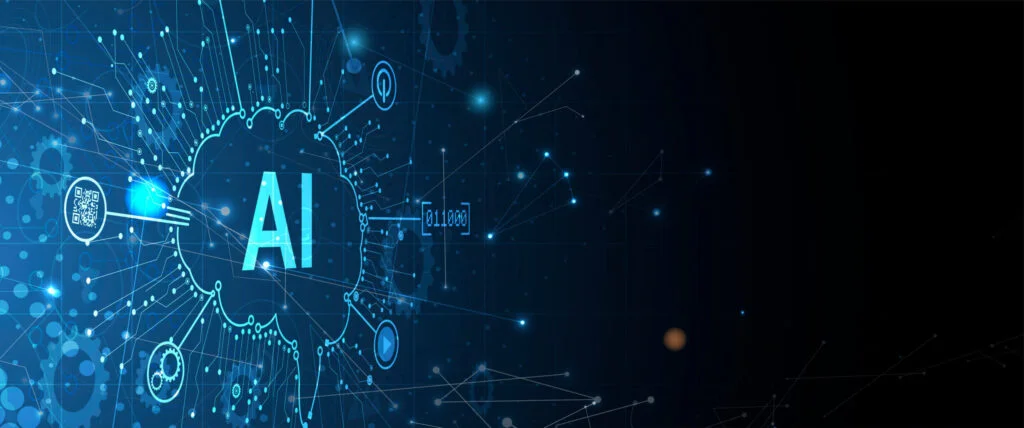Artificial Intelligence (AI) has become one of the most transformative technologies of our time, impacting various aspects of our daily lives and industries. From virtual personal assistants like Siri and Alexa to self-driving cars and advanced medical diagnostics, AI is everywhere. But what exactly is AI, and how does it work? In this comprehensive guide, we’ll explore the fundamentals of AI, its history, types, and the mechanisms that power its operations.
Defining Artificial Intelligence
Artificial Intelligence refers to the simulation of human intelligence in machines, allowing them to perform tasks that typically require human intelligence. These tasks include problem-solving, reasoning, learning, understanding natural language, and recognizing patterns. AI systems are designed to mimic cognitive functions, such as learning from experience, adapting to new situations, and solving problems.
The History of AI
The roots of AI can be traced back to ancient history, but modern AI began to take shape in the mid-20th century. Here’s a brief overview of key milestones in the history of AI:
- Dartmouth Workshop (1956): The term “artificial intelligence” was coined at the Dartmouth Workshop, where researchers gathered to discuss the possibilities of creating machines that could simulate human intelligence.
- The AI Winter (1970s-1980s): After initial enthusiasm, AI research faced setbacks due to over hyped expectations and underwhelming results. Funding decreased, leading to what is known as the “AI winter.”
- Machine Learning (1990s): Machine learning techniques, a subset of AI, gained popularity, enabling computers to learn from data and improve their performance over time.
- Deep Learning (2010s): Deep learning, a subfield of machine learning, gained prominence, leading to significant advancements in areas like computer vision and natural language processing.
Types of AI
AI can be categorized into three main types, based on its capabilities and functions:
- Narrow or Weak AI: This type of AI is designed for specific tasks, such as speech recognition or image classification. It operates within a limited scope and does not possess general intelligence.
- General or Strong AI: General AI has the ability to understand, learn, and perform tasks across a wide range of domains, just like a human being. True general AI remains theoretical and is yet to be achieved.
- Artificial Super intelligence (ASI): ASI represents a level of AI that surpasses human intelligence and capabilities. It can potentially outperform humans in virtually all tasks and may pose ethical and existential challenges.
For the purpose of this guide, we will primarily focus on Narrow AI since it is the most prevalent form of AI in today’s applications.
How AI Works
AI systems rely on data, algorithms, and computing power to perform tasks. Let’s dive into the essential components that make AI work.
Data
Data is the lifeblood of AI. AI systems require large and diverse datasets to learn from. This data can be in the form of text, images, videos, or any other format relevant to the task at hand. The quality and quantity of data greatly influence the performance of AI models.
Algorithms
Algorithms are sets of instructions that AI systems use to process data and perform specific tasks. Machine learning, a subset of AI, utilizes algorithms to discover patterns and make predictions. Some common machine learning algorithms include decision trees, support vector machines, and neural networks.
Neural Networks
Neural networks are a crucial component of many AI systems, especially those used in deep learning. These networks are inspired by the structure and function of the human brain, consisting of interconnected layers of artificial neurons. They process data by transmitting signals and adjusting weights to make predictions or classifications.
Training
The process of teaching an AI system to perform a specific task is known as training. During training, the AI model is exposed to a labeled dataset, allowing it to learn from examples. The model adjusts its internal parameters, such as the weights in a neural network, to minimize errors and improve its performance.
Inference
Once an AI model is trained, it can be used for inference, which is the application of the model to new, unseen data. Inference is the phase where AI systems make predictions, classify objects, or provide recommendations based on the knowledge acquired during training.
Learning
Learning is at the core of AI. AI systems improve their performance through continuous learning, either supervised (with labeled data), unsupervised (without labels), or reinforcement learning, where they receive feedback and adapt their behavior accordingly.
The Role of Machine Learning in AI
Machine learning is a subset of AI that focuses on enabling machines to learn from data without explicit programming. It plays a central role in various AI applications. Here’s an overview of key concepts in machine learning:
Supervised Learning
In supervised learning, AI models are trained using labeled data, where the input data and the desired output are provided. The model learns to map inputs to outputs and can make predictions on new, unlabeled data.
Unsupervised Learning
Unsupervised learning involves training AI models with unlabeled data. These models identify patterns or structures in the data, such as clustering similar data points or reducing the dimension of the data.
Reinforcement Learning
Reinforcement learning is inspired by behavioral psychology. AI agents interact with an environment and learn to make decisions that maximize a cumulative reward. This approach is often used in training robots and agents to play games.
Deep Learning
Deep learning is a subset of machine learning that employs neural networks with multiple hidden layers. It has been instrumental in advancing fields like computer vision, natural language processing, and speech recognition.
Applications of AI
AI has found applications in various fields, transforming the way we live and work. Here are some notable areas where AI is making a significant impact:
Healthcare
AI is being used to enhance medical diagnoses, predict disease outbreaks, and assist in drug discovery. Machine learning models can analyze medical images, such as X-rays and MRIs, to identify anomalies and assist healthcare professionals in making more accurate decisions.
Finance
In the financial industry, AI is employed for fraud detection, algorithmic trading, and credit risk assessment. AI-driven chat bots and virtual assistants also provide customer support and financial advice.
Autonomous Vehicles
Self-driving cars and autonomous drones rely on AI for navigation, obstacle detection, and decision-making. Advanced sensors and machine learning algorithms allow these vehicles to operate safely in complex environments.
Natural Language Processing
Natural language processing (NLP) is a sub field of AI that focuses on enabling machines to understand, interpret, and generate human language. NLP is used in applications like chat bots, sentiment analysis, and language translation.
Recommendation Systems
AI-driven recommendation systems, such as those used by Netflix and Amazon, analyze user data to suggest products, movies, or content that matches the user’s preferences and behavior.
Manufacturing
AI is used in manufacturing for quality control, predictive maintenance, and process optimization. Robots and automated systems equipped with AI capabilities can perform tasks with high precision and efficiency.
Gaming
AI is employed in video games to create intelligent non-player characters (NPCs) and challenging opponents. Game developers use AI to simulate human-like behaviors and decision-making in virtual environments.
Agriculture
In agriculture, AI helps with crop monitoring, precision farming, and automated harvesting. Drones equipped with AI technology can assess crop health, identify pests, and optimize irrigation.
Education
AI-powered e-learning platforms provide personalized learning experiences. These systems adapt to individual student needs, offering customized lessons and assessments.
The Future of AI
The future of AI holds immense promise and potential, but it also raises important ethical and societal questions. Here are some key considerations for the future of AI:
Ethical and Legal Concerns
As AI systems become more capable, ethical and legal frameworks need to be developed to ensure responsible and unbiased AI use. Issues like bias in AI, privacy, and accountability are crucial areas of concern.
Augmented Intelligence
AI systems are likely to continue working alongside humans, augmenting their capabilities rather than replacing them. Augmented intelligence combines human expertise with AI to solve complex problems.
New Applications
AI’s influence will continue to expand into new domains, including environmental conservation, disaster management, and space exploration. AI-driven solutions will contribute to solving global challenges.
AI in Healthcare
AI will play a pivotal role in healthcare, from drug discovery and personalized medicine to remote patient monitoring and early disease detection.
Quantum Computing and AI
Quantum computing could revolutionize AI by solving complex problems exponentially faster. The synergy of quantum computing and AI holds great potential for scientific and industrial advancements.
AI Education
AI education and literacy will become increasingly important, as individuals and organizations need to understand how AI systems work and how to use them effectively.
AI and Jobs
While AI may automate certain tasks, it is also expected to create new job opportunities in areas like AI development, ethics, and management.
Conclusion
Artificial Intelligence is a transformative technology that relies on data, algorithms, and neural networks to perform tasks that typically require human intelligence. It encompasses various sub fields, such as machine learning and deep learning, and finds applications in diverse industries, from healthcare to finance and gaming. The future of AI is bright, but it also brings ethical and societal challenges that need to be addressed. As AI continues to evolve, it will shape our world in ways we are only beginning to imagine, offering both opportunities and responsibilities for individuals and societies alike.






0 Comments